An Elaboration of Nature; Cosmology et al.
I have previously discussed the distinction between Life and Nature and would now like to consider some of what the world of lifelessness entails and discuss our best guess at what lead up to the beginning of life.
Nature is astounding in its scale and complexity; it is something that we are really just beginning to grasp with science, and still holds countless mysteries. It is noteworthy that most of what we presume to know of the universe is mostly based on speculation and small-scale observation, and as a result, quite likely as inaccurate as our former notions that the earth was flat or that the universe literally revolved around us. The realm of perception and observation which we base our conclusions from is infinitesimal in that we have observed but a sliver of the universes history from a minuscule vantage-point in a subjective manner. Though we seem to have learned an enormity about the way that nature works, we will undoubtedly continue to redefine our view of nature so long as we continue to succeed in our pursuit of understanding it. That being said, I will explore some of the notions that we have about the Natural world and the history of the universe. In all of this I am looking to explore what kind of place we live in and how immaculate it really is, though I will inevitably go on a long cosmological discourse because it is a topic that intrigues me.
What we are made of; the other story of stuff.
It is fairly well accepted, within fields such as astrophysics and cosmology, that pretty much everything on our planet is made of stardust. Your body, the clothes you wear, the water you drink, and the car you drive to work were all made possible by a series of astronomical yet at the same time surprisingly delicate cosmic events. Why do we think this to be the case? It’s a mixture of physics and chemistry; it’s our best explanation of how all of the complex materials that exist in the universe today could have been generated. This is the story of the universe as best as we can tell.
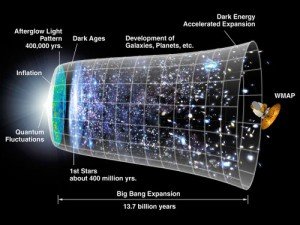
In the beginning:
The Big bang theory, which is the predominant explanation for the state of the universe, asserts that the universe just kind of popped up from the unknown in an unimaginably massive explosion that spewed forth the base building blocks for the universe as we know it. It’s assumed that prior to the big bang the universe didn’t work the way it does now; basically, none of our rules applied and that’s why we can’t really explain it. In order to understand why we accept that we can’t understand the universe prior to the big bang, you’ve got to understand a little more about time.
Time keeps on slippin’ slippin’ slippin’ slippin’ into the future.
Time does not appear to be quite as normal as we tend to think it is.. We like to consider time as a constant: 5 minutes is a fundamental and basic value which will always equate to 5 minutes and never any more or less. Modern science disagrees. Time can move more quickly or slowly depending on where you are; the main factor here is A) how fast you are moving, B) whether you are accelerating or not , and C) how much gravity is being exerted on you. To simply, if you were in a black hole looking out, everything on earth would seem to be moving very very quickly; we’ll say 1,000,000 years per second. On the other side, if you were on earth looking into a black hole, it wouldn’t seem to be moving at all, as it would take 1,000,000 years to observe a black-hole second..
Both the earth dweller and the black-hole dweller would perceive local time the same way – one second is one second; that second would only seem shorter or longer when you’re comparing it to time passage elsewhere. Confused yet? Well, it is a hard one to get your head around, but the basic thing that’s important to this write-up is that Acceleration and Gravity slow time down, by ‘bending’ it.
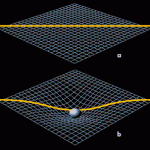
Now then, before the beginning of the universe, we can imagine that all this matter and energy that exploded in the Big Bang must have been sort of sitting around — but with so much gravity being exerted by all the mass in the pre-big bang universe it wouldn’t just bend time and slow it down like the black hole did, but it would ‘break’ time, making a sort of ‘time-bubble’ around the pre-universe, effectively stopping time from happening. Without time as a factor in the universe, everything that we know of the universe falls apart, meaning that the pre-universe wouldn’t need to follow the post-big bang universes rules (oh you rascally little rebel!).
Time Begins
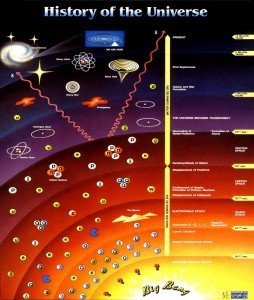
So, the Big Bang released Time as we know it as well as an explosion of energy and matter in the form of plasma. The plasma gradually cooled down and formed into Hydrogen, the most basic and simple atom (there’s a lot of other jazz about Matter kicking Anti-Matter’s ass and so forth, but I’ll save you the anti-matter and pre-atomic/subatomic particle discourses). Skipping along quite a ways and simplifying things a little, we ended up with a sort of giant expanding hydrogen cloud that started to form little clusters due to gravity, kind of like how raindrops form inside a cloud. Gravity pulled vast amounts of hydrogen together into tight packages, and the amount of friction and heat occurring within these imploding clusters as a result of gravity’s pull began the process of nuclear fusion; high energy atomic collisions that produce more complex elements and release a ton of energy (fusion is notable different from fission, the kind nuclear power that tend to we use which splits atoms and releases energy). Once the fusion begins, these hydrogen clusters ascend to Stardom.
From the life of a Star to the birth of the Earth
Note that there the cycle of a star depends on its size, and that the process I describe below is one scenario of several. Due to the amount of energy produced from fission, it manages to keep gravity from collapsing the star past a certain point of equilibrium of ‘push and pull’ wile the star gradually fuses (‘burns’) most of its hydrogen. Once most of the hydrogen is depleted, the star stops producing enough fusion energy to maintain the push-pull balance with gravity, allowing gravity to kick in and compress the star until it gets hot enough for helium to start fusing and produce enough energy to start a new push-pull equilibrium. The star progresses this way for a while, finding balances between gravity and the energy produced from fission and producing denser and denser elements until it gets to iron. Iron will not fuse as the elements before it did; it takes more pressure and heat than what’s available, so gravity wins… sort of. The star collapses in on its self, resulting in a massive explosion, or a super-nova. The supernova produces enough energy to start fusing Iron and so it is in supernovas that all of the denser materials of the universe are created.. Iron is the 26th element on the periodic table and we’ve found the first 96 elements to occur in nature (these 96 are being present on Earth), meaning that nearly three quarters of the earths atomic diversity appear to result from Supernovas, most of the rest having formed in the centers of stars. Each supernova would spread these elements out into the universe as a sort of cosmic dust, which would later get sucked into existing or newly forming stars. Our sun would have formed in part from this dust, along with a lot of hydrogen, and our solar system would have formed from the ring of dust surrounding our sun. So the Earth is made of star dust which resulted from the big bang and countless supernovas, and it just so happened to be placed at the right range from our sun to allow liquid water and provide enough (but not too much) solar energy for life to emerge.
**Beyond the cosmos **
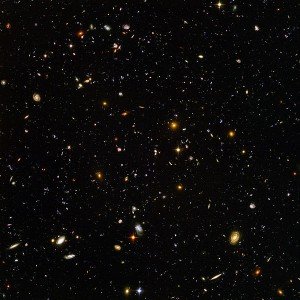
The above was made possible by the ‘rules of nature’, or the way that things are; the time, forces, masses, energies, and events made possible by the universe being exactly the way that it is. If the interactions between things on both a cosmic and sub-atomic scale were ever so slightly different, the whole story of the universe would be significantly different. If any of the three natural forces (Gravity, Strong Nuclear and Weak Nuclear) were any different the Earth would not exist as it does; if the weight or interactions of atoms and sub-atomic particles were different, if the anti-matter to matter ratio was different, or even if the total mass of the universe were different. All of these are intriguing topics, for they showcase how little we really know. If you look into Sub-atomic particles you’ll quickly become lost in the vast abstractions of our theories. If you look into matter and anti-matter you’ll probably get as confused as I do (though it’s certainly interesting, for work on antimatter has demonstrated that all matter is simply a form of energy); If you try to imagine time as we believe it to be you’ll probably twist your mind; Notions like quantum theory and string theory prove baffling and inconceivable to most; cosmologists have even taken to explaining much of the universes quandaries through the existence of ’Dark Matter’ and ‘Dark Energy’ which are said to make up as much as 95% of the universe and remain undiscovered unexplained at large (which to me sounds like we may have made some errors along the way). We are probably wrong about a lot of the things that we take to be true of the universe; but the fact remains that the base structures of the universe and all of its ‘rules’, or Nature as I would call all of this, is truly a beautiful and astounding thing on both a macro and micro scale, and we can only really dream of understanding in within our lifetimes. We occupy such a small fraction of it that we could be likened to a day in the life of a grain of sand in the Sahara desert.
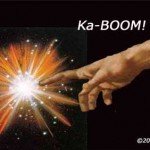
The order and chaos of Nature is truly amazing, and the immerse complexity of it all certainly raises a question: how did it come to be? From the sub-atomic to the galactic there seems to be so much order in the way that things work, but what determined the rules? Could it be that time, matter, energy, the natural forces, and all that comprises the universe that we life in is just a matter of happenstance? How could such an amazing thing simply come to be? These are questions that we cannot answer, but it does leave room for some sort of designer, some initiator, some driving force that had a role in determining just how the way things turned out to be within the universe..
Neat, but what the hell are you getting at?
Well, I mean to demonstrate our lack of understanding relating to nature while also contextualizing the equally astounding event which is life. I think it is important to understand that there is much more than what’s here and now, but also to illustrate our best guess at what it took just for the building blocks of life to come into being. Next I hope to discuss what happened from here: the beginning of life.